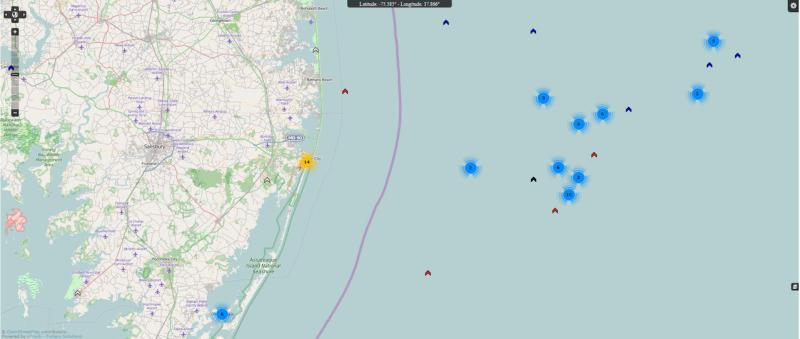Ensuring a level playing field so that fishermen who comply with rules and regulations get the best possible price for their product is one of the fundamental goals of NOAA’s enforcement program. But the ocean is vast, and it is simply impossible to be everywhere and to check every boat. One of the tools that Law Enforcement personnel rely on to ensure a level playing field is the Vessel Monitoring System, or VMS. The VMS uses a GPS-type unit to allow enforcement personnel to monitor compliance and provide evidence for prosecution of offenders.
“It’s one of a number of tools we use to help ensure a fair and level playing field,” said Logan Gregory, acting deputy director for NOAA’s Office of Law Enforcement (OLE), of the satellite-based surveillance system. “Simply stated, this enhances our ability to cover more area with fewer people.”
VMS automatically sends position reports and other information that is monitored by enforcement staff. This information is used to help identify fishing activity and its location. Since OLE is responsible for more than 3.4 million nautical miles of exclusive economic zone (EEZ) and 95,000 miles of coastline, VMS serves as a key tool in monitoring U.S. fisheries.
This summer, the VMS program is expanding.
Program Expansion
Previously, VMS requirements were identified in more than 22 fisheries in both US and international waters. New agreements have expanded the VMS program and now require that all vessels fishing under the High Seas Fishing Compliance Act (HSFCA) and the Inter-American Tropical Tuna Commission (IATTC) have VMS units aboard.
“The added requirements will strengthen NMFS’ ability to ensure that violators are not undermining international conservation and management measures recognized by the U.S.,” said John Thibodeau, spokesman for NOAA Fisheries international affairs office.
Federal Register Notice
On Dec. 24, 2014, a final rule was published in the Federal Register that codifies the type-approval standards, specifications, and procedures for vendors to maintain approval for their VMS devices and services. This rule more clearly defines standards regarding communication devices, revised latency standards, and established type-approval, renewal, revocation, and appeals processes for vendors and users. The rule went into effect Jan. 23, 2015. The deadline to be compliant is Sept. 30, 2015. This adjustment will impact nearly 1,000 VMS users who will need to purchase a new, approved system.
VMS Grants
Understanding the possible financial burden of these additional requirements and changes in type approvals, the VMS program is providing a solution to ease the transition.
“Through a reimbursement grant, we are offering compensation opportunities to the fishermen affected by the non-renewed type-approvals and added VMS-required fisheries,” said Kelly Spalding, VMS program manager. “We want to help relieve the burden on the fishermen as much as we can.”
The VMS program will allocate funding to help support U.S. fishermen. Typically grant eligibility is based on a two-part system – only once per fisherman and once per vessel. Thus, if both fisherman and vessel have already been awarded a reimbursement, they are no longer qualified to receive funds from the VMS grant program. In this special circumstance, this grant will be available to vessel owners who are required to purchase a new unit due to these regulatory changes, including those who have previously received a reimbursement.
Read more about the VMS and regional requirements.



